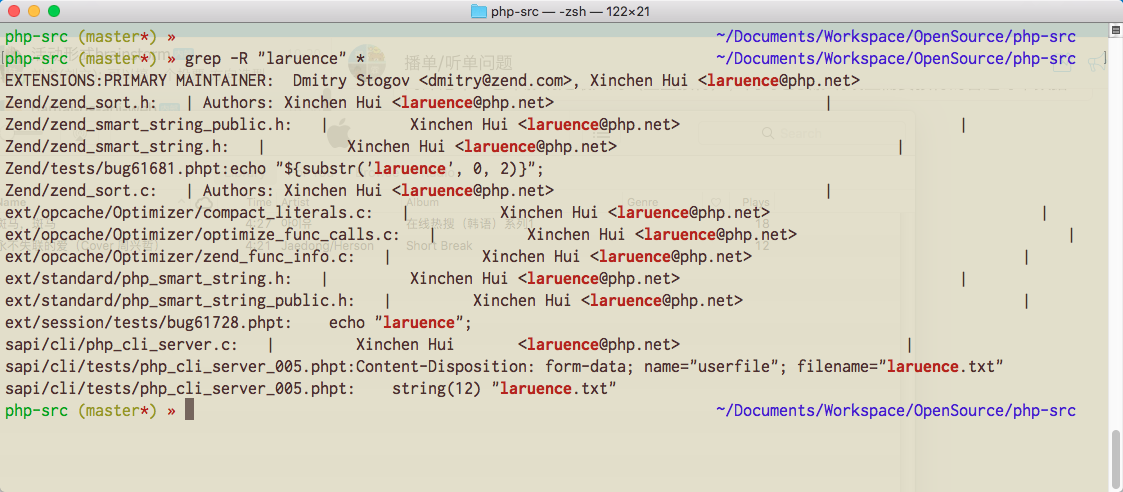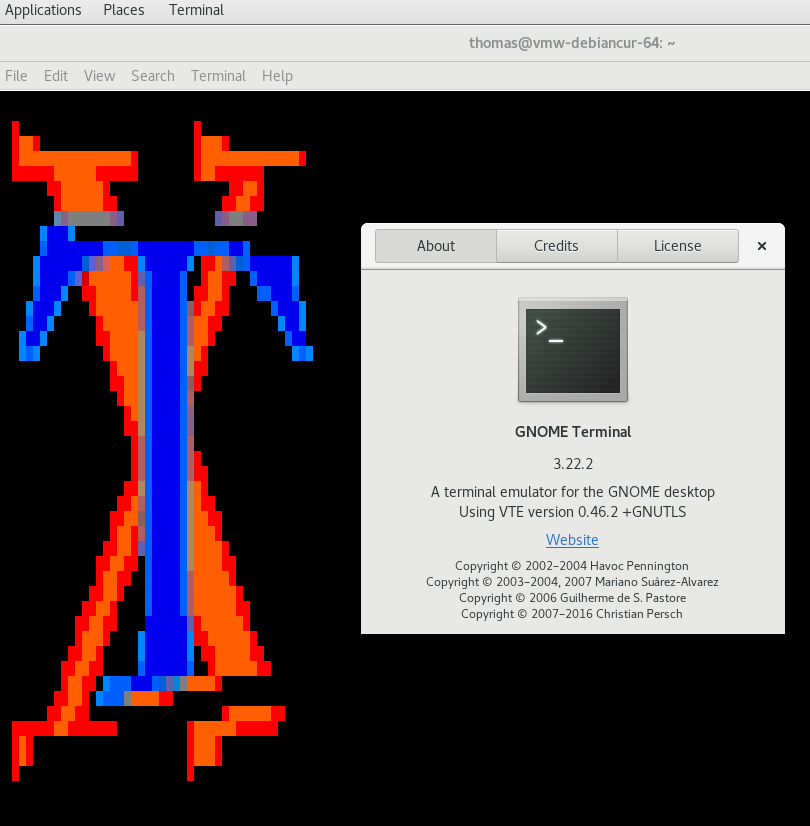In the olden days of teletype terminals, terminals were away from computers andwere connected to them through serial cables. The terminals could be configuredby sending a series of bytes. All the capabilities (such as moving the cursor to a new location, erasing part of the screen, scrolling the screen, changing modes etc.) of terminals could be accessed through these series of bytes. These control seeuqnces are usually called escape sequences, because they start with an escape(0x1B) character. Even today, with proper emulation, we can send escape sequences to the emulator and achieve the same effect on a terminal window.
- Ncurses Library For Windows
- Ncurses Library Is Not Usable
- Ncurses Library Ubuntu
- Ncurses Library Online
- Ncurses Library Documentation
- Ncurses Library Windows
- Ncurses Library
Suppose you wanted to print a line in color. Try typing this on your console.
All the basics tools of ncurses lib. The ncurses library provides a rich set of functions to update and access the screen in text mode. While graphical user interfaces are very cool, not every program needs to run with a point-and-click interface. If your program runs in plain-text terminals, consider using ncurses to manipulate the terminal screen. For Fedora Linux: If you are using Fedora 22 Linux or the newer versions, you can use the dnf command to install the ncurses library, type: $ sudo dnf install ncurses-devel. Outputs: root@fedora26-osetc # dnf install ncurses-devel Last metadata expiration check: 1:36:24 ago on Fri 21 Jul 2017 09:01:19 AM EDT.

The first character is an escape character, which looks like two characters ^ and [. To be able to print it, you have to press CTRL+V and then the ESC key. All the others are normal printable characters. You should be able to see the string 'In Color' in red. It stays that way and to revert back to the original mode type this.
Now, what do these magic characters mean? Difficult to comprehend? They mighteven be different for different terminals. So the designers of UNIX invented a mechanism named
You might be wondering, what the import of all this technical gibberish is. Inthe above scenario, every application program is supposed to query the terminfoand perform the necessary stuff (sending control characters etc.). It soon becamedifficult to manage this complexity and this gave birth to 'CURSES'. Curses isa pun on the name 'cursor optimization'. The Curses library forms a wrapperover working with raw terminal codes, and provides highly flexible andefficient API (Application Programming Interface). It provides functions tomove the cursor, create windows, produce colors, play with mouse etc. Theapplication programs need not worry about the underlying terminal capabilities.
So what is NCURSES? NCURSES is a clone of the original System V Release 4.0(SVr4) curses. It is a freely distributable library, fully compatible witholder version of curses. In short, it is a library of functions that managesan application's display on character-cell terminals. In the remainder of thedocument, the terms curses and ncurses are used interchangeably.
Ncurses Library For Windows
A detailed history of NCURSES can be found in the NEWS file from the sourcedistribution. The current package is maintained by Thomas Dickey. You can contact the maintainers at bug-ncurses@gnu.org.
1.2. What we can do with NCURSESNCURSES not only creates a wrapper over terminal capabilities, but also gives arobust framework to create nice looking UI (User Interface)s in text mode. Itprovides functions to create windows etc. Its sister libraries panel, menu andform provide an extension to the basic curses library. These libraries usuallycome along with curses. One can create applications that contain multiplewindows, menus, panels and forms. Windows can be managed independently, canprovide 'scrollability' and even can be hidden.
Menus provide the user with an easy command selection option. Forms allow thecreation of easy-to-use data entry and display windows. Panels extend thecapabilities of ncurses to deal with overlapping and stacked windows.
These are just some of the basic things we can do with ncurses. As we movealong, We will see all the capabilities of these libraries.
1.3. Where to get itAll right, now that you know what you can do with ncurses, you must be rearingto get started. NCURSES is usually shipped with your installation. In caseyou don't have the library or want to compile it on your own, read on.
Compiling the package
NCURSES can be obtained from ftp://ftp.gnu.org/pub/gnu/ncurses/ncurses.tar.gz or any of the ftp sites mentioned in http://www.gnu.org/order/ftp.html.
Read the README and INSTALL files for details on to how to install it. It usually involves the following operations.
Using the RPM

NCURSES RPM can be found and downloaded from http://rpmfind.net . The RPM can be installed with the following command after becoming root.
1.4. Purpose/Scope of the documentThis document is intended to be a 'All in One' guide for programming withncurses and its sister libraries. We graduate from a simple 'Hello World'program to more complex form manipulation. No prior experience in ncurses isassumed. The writing is informal, but a lot of detail is provided foreach of the examples.
1.5. About the ProgramsAll the programs in the document are available in zipped formhere. Unzip and untar it. The directory structure looks like this.
The individual directories contain the following files.
There is a top level Makefile included in the main directory. It builds all the files and puts the ready-to-use exes in demo/exe directory. You can also do selective make by going into the corresponding directory. Each directory contains a README file explaining the purpose of each c file in the directory.
For every example, I have included path name for the file relative to the examples directory.
If you prefer browsing individual programs, point your browser to http://tldp.org/HOWTO/NCURSES-Programming-HOWTO/ncurses_programs/
All the programs are released under the same license that is used by ncurses(MIT-style). This gives you the ability to do pretty much anything other thanclaiming them as yours. Feel free to use them in your programs as appropriate.
 1.6. Other Formats of the document
1.6. Other Formats of the documentThis howto is also availabe in various other formats on the tldp.org site.Here are the links to other formats of this document.
1.6.1. Readily available formats from tldp.org
Ncurses Library Is Not Usable
Acrobat PDF Format
PostScript Format
In Multiple HTML pages
In One big HTML format
If above links are broken or if you want to experiment with sgml read on.
See LDP Author guide for more details. If all else failes, mail me at ppadala@gmail.com
1.7. CreditsI thank Sharath and Emre Akbas forhelping me with few sections. The introduction was initially written by sharath.I rewrote it with few excerpts taken from his initial work. Emre helped inwriting printw and scanw sections.
Perl equivalents of the example programs are contributed by Anuradha Ratnaweera.
Ncurses Library Ubuntu
Then comes Ravi Parimi, mydearest friend, who has been on this project before even one line was written.He constantly bombarded me with suggestions and patiently reviewed the wholetext. He also checked each program on Linux and Solaris.
1.8. Wish ListNcurses Library Online
This is the wish list, in the order of priority. If you have a wish or you wantto work on completing the wish, mail me.
Add examples to last parts of forms section.
Prepare a Demo showing all the programs and allow the user to browse throughdescription of each program. Let the user compile and see the program in action.A dialog based interface is preferred.
Add debug info. _tracef, _tracemouse stuff.
Accessing termcap, terminfo using functions provided by ncursespackage.
Working on two terminals simultaneously.
Add more stuff to miscellaneous section.
Copyright © 2001 by Pradeep Padala.
Permission is hereby granted, free of charge, to any person obtaining a copyof this software and associated documentation files (the 'Software'), to dealin the Software without restriction, including without limitation the rightsto use, copy, modify, merge, publish, distribute, distribute withmodifications, sublicense, and/or sell copies of the Software, and to permitpersons to whom the Software is furnished to do so, subject to the followingconditions:
Ncurses Library Documentation

The above copyright notice and this permission notice shall be included in allcopies or substantial portions of the Software.
Ncurses Library Windows
THE SOFTWARE IS PROVIDED 'AS IS', WITHOUT WARRANTY OF ANY KIND, EXPRESS ORIMPLIED, INCLUDING BUT NOT LIMITED TO THE WARRANTIES OF MERCHANTABILITY,FITNESS FOR A PARTICULAR PURPOSE AND NONINFRINGEMENT. IN NO EVENT SHALL THEABOVE COPYRIGHT HOLDERS BE LIABLE FOR ANY CLAIM, DAMAGES OR OTHER LIABILITY,WHETHER IN AN ACTION OF CONTRACT, TORT OR OTHERWISE, ARISING FROM, OUT OF ORIN CONNECTION WITH THE SOFTWARE OR THE USE OR OTHER DEALINGS IN THE SOFTWARE.
Except as contained in this notice, the name(s) of the above copyright holdersshall not be used in advertising or otherwise to promote the sale, use orother dealings in this Software without prior written authorization.